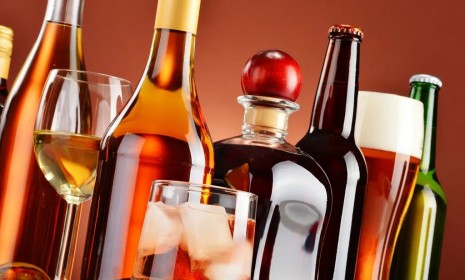近日,繼報道氧化鈰納米顆粒提高棉花抗鹽能力的機理研究(Liu et al. 2021, Journal of Nanobiotechnology)后,華中農業大學植物科學技術學院吳洪洪教授課題組在Journal of Nanobiotechnology在線發表了題為“Nanoceria seed priming enhanced salt tolerance in rapeseed through modulating ROS homeostasis and α-amylase activities”的研究論文,報道了氧化鈰納米顆粒種子引發提升油菜耐鹽能力的可能機理。
鹽脅迫是影響農作物高效生產的主要限制因素之一。油菜作為全世界廣泛栽培的重要經濟作物,鹽脅迫嚴重影響了其產量與品質。此外,利用油菜進行鹽堿地改良也是目前的一個研究熱點。因此,提高油菜耐鹽能力不僅可以促進油菜的鹽堿地種植,也能有利于更好地開展鹽堿地改良。納米材料種子引發(使用納米材料對種子進行引發)在提高作物耐鹽中具有巨大的應用潛力。然而,關于納米材料種子引發提升作物耐鹽能力的具體機理仍有許多不明之處。
氧化鈰納米顆粒種子引發提高了油菜幼苗鈉鉀穩態維持能力
在本研究中,研究人員合成了聚丙烯酸修飾的低Ce3+/Ce4+摻雜比率的氧化鈰納米顆粒(PNC)。通過PNC引發油菜種子8小時,顯著地提升了油菜種子在鹽脅迫下(200 mM NaCl)的發芽率、鮮重以及水分吸收。鹽脅迫下,通過PNC引發油菜種子顯著降低了發芽7天后的油菜幼苗活性氧含量(·O2-和H2O2)以及提升了抗氧化酶活性(SOD、POD、CAT)。同時,PNC降低了鹽脅迫下油菜幼苗地上部以及根系的Na+含量,提升了K+含量,維持了較好的Na+/K+穩態。以上結果證明,PNC通過緩解氧化應激以及維持離子平衡提升了油菜種子在鹽脅迫下的發芽能力。
α-淀粉酶是種子發芽期間負責淀粉降解的關鍵酶。本研究發現,鹽脅迫下PNC顯著提高了油菜種子引發期間的α-淀粉酶活性。qPCR結果顯示,PNC引發上調了與α-淀粉酶相關的兩個基因(AMY1和AMY2)表達量。這些結果證明PNC通過調控油菜種子α-淀粉酶活性,提升了其在鹽脅迫下的發芽能力。此外,激光共聚焦結果表明,種子引發期間,PNC大多附著在種皮表面,表面PNC和油菜種子種皮之間可能也存在相互作用,從而提升其耐鹽能力。本研究從活性氧穩態平衡和α-淀粉酶角度揭示了氧化鈰納米顆粒種子引發提升油菜耐鹽能力的機制,為納米材料種子引發提升作物耐鹽機理研究提供了更多理論支撐。總之,本研究進一步展示了植物納米生物技術在提高作物抗逆能力方面的良好應用潛力,也表明學科交叉有可能為研究實踐生產中的科學問題提供新的備選研究或技術方案。
種子引發過程中,氧化鈰納米顆粒在油菜種子中的分布
華中農業大學植物科學技術學院吳洪洪教授課題組博士后Mohammad Nauman Khan為該論文第一作者,植物科學技術學院李召虎教授、吳洪洪教授為本文通訊作者。本研究得到國家自然科學基金委項目 (31901464,32071971),華中農業大學高層次人才引進經費、校自主基金優秀人才培育項目(2662020ZKPY001)和華中農業大學-中國農業科學院深圳農業基因組研究所合作基金(SZYJY2021008)等項目資助。
【英文摘要】
Background
Salinity is a big threat to agriculture by limiting crop production. Nanopriming (seed priming with nanomaterials) is an emerged approach to improve plant stress tolerance; however, our knowledge about the underlying mechanisms is limited.
Results
Herein, we used cerium oxide nanoparticles (nanoceria) to prime rapeseeds and investigated the possible mechanisms behind nanoceria improved rapeseed salt tolerance. We synthesized and characterized polyacrylic acid coated nanoceria (PNC, 8.5?±?0.2 nm, ?43.3?±?6.3 mV) and monitored its distribution in different tissues of the seed during the imbibition period (1, 3, 8 h priming)。 Our results showed that compared with the no nanoparticle control, PNC nanopriming improved germination rate (12%) and biomass (41%) in rapeseeds (Brassica napus) under salt stress (200 mM NaCl)。 During the priming hours, PNC were located mostly in the seed coat, nevertheless the intensity of PNC in cotyledon and radicle was increased alongside with the increase of priming hours. During the priming hours, the amount of the absorbed water (52%, 14%, 12% increase at 1, 3, 8 h priming, respectively) and the activities of α-amylase were significantly higher (175%, 309%, 295% increase at 1, 3, 8 h priming, respectively) in PNC treatment than the control. PNC primed rapeseeds showed significantly lower content of MDA, H2O2, and ?O2? in both shoot and root than the control under salt stress. Also, under salt stress, PNC nanopriming enabled significantly higher K+ retention (29%) and significantly lower Na+ accumulation (18.5%) and Na+/K+ ratio (37%) than the control.
Conclusions
Our results suggested that besides the more absorbed water and higher α-amylase activities, PNC nanopriming improves salt tolerance in rapeseeds through alleviating oxidative damage and maintaining Na+/K+ ratio. It adds more knowledge regarding the mechanisms underlying nanopriming improved plant salt tolerance.
原文鏈接:
https://jnanobiotechnology.biomedcentral.com/articles/10.1186/s12951-021-01026-9
日期:2021-09-23
鹽脅迫是影響農作物高效生產的主要限制因素之一。油菜作為全世界廣泛栽培的重要經濟作物,鹽脅迫嚴重影響了其產量與品質。此外,利用油菜進行鹽堿地改良也是目前的一個研究熱點。因此,提高油菜耐鹽能力不僅可以促進油菜的鹽堿地種植,也能有利于更好地開展鹽堿地改良。納米材料種子引發(使用納米材料對種子進行引發)在提高作物耐鹽中具有巨大的應用潛力。然而,關于納米材料種子引發提升作物耐鹽能力的具體機理仍有許多不明之處。
氧化鈰納米顆粒種子引發提高了油菜幼苗鈉鉀穩態維持能力
在本研究中,研究人員合成了聚丙烯酸修飾的低Ce3+/Ce4+摻雜比率的氧化鈰納米顆粒(PNC)。通過PNC引發油菜種子8小時,顯著地提升了油菜種子在鹽脅迫下(200 mM NaCl)的發芽率、鮮重以及水分吸收。鹽脅迫下,通過PNC引發油菜種子顯著降低了發芽7天后的油菜幼苗活性氧含量(·O2-和H2O2)以及提升了抗氧化酶活性(SOD、POD、CAT)。同時,PNC降低了鹽脅迫下油菜幼苗地上部以及根系的Na+含量,提升了K+含量,維持了較好的Na+/K+穩態。以上結果證明,PNC通過緩解氧化應激以及維持離子平衡提升了油菜種子在鹽脅迫下的發芽能力。
α-淀粉酶是種子發芽期間負責淀粉降解的關鍵酶。本研究發現,鹽脅迫下PNC顯著提高了油菜種子引發期間的α-淀粉酶活性。qPCR結果顯示,PNC引發上調了與α-淀粉酶相關的兩個基因(AMY1和AMY2)表達量。這些結果證明PNC通過調控油菜種子α-淀粉酶活性,提升了其在鹽脅迫下的發芽能力。此外,激光共聚焦結果表明,種子引發期間,PNC大多附著在種皮表面,表面PNC和油菜種子種皮之間可能也存在相互作用,從而提升其耐鹽能力。本研究從活性氧穩態平衡和α-淀粉酶角度揭示了氧化鈰納米顆粒種子引發提升油菜耐鹽能力的機制,為納米材料種子引發提升作物耐鹽機理研究提供了更多理論支撐。總之,本研究進一步展示了植物納米生物技術在提高作物抗逆能力方面的良好應用潛力,也表明學科交叉有可能為研究實踐生產中的科學問題提供新的備選研究或技術方案。
種子引發過程中,氧化鈰納米顆粒在油菜種子中的分布
華中農業大學植物科學技術學院吳洪洪教授課題組博士后Mohammad Nauman Khan為該論文第一作者,植物科學技術學院李召虎教授、吳洪洪教授為本文通訊作者。本研究得到國家自然科學基金委項目 (31901464,32071971),華中農業大學高層次人才引進經費、校自主基金優秀人才培育項目(2662020ZKPY001)和華中農業大學-中國農業科學院深圳農業基因組研究所合作基金(SZYJY2021008)等項目資助。
【英文摘要】
Background
Salinity is a big threat to agriculture by limiting crop production. Nanopriming (seed priming with nanomaterials) is an emerged approach to improve plant stress tolerance; however, our knowledge about the underlying mechanisms is limited.
Results
Herein, we used cerium oxide nanoparticles (nanoceria) to prime rapeseeds and investigated the possible mechanisms behind nanoceria improved rapeseed salt tolerance. We synthesized and characterized polyacrylic acid coated nanoceria (PNC, 8.5?±?0.2 nm, ?43.3?±?6.3 mV) and monitored its distribution in different tissues of the seed during the imbibition period (1, 3, 8 h priming)。 Our results showed that compared with the no nanoparticle control, PNC nanopriming improved germination rate (12%) and biomass (41%) in rapeseeds (Brassica napus) under salt stress (200 mM NaCl)。 During the priming hours, PNC were located mostly in the seed coat, nevertheless the intensity of PNC in cotyledon and radicle was increased alongside with the increase of priming hours. During the priming hours, the amount of the absorbed water (52%, 14%, 12% increase at 1, 3, 8 h priming, respectively) and the activities of α-amylase were significantly higher (175%, 309%, 295% increase at 1, 3, 8 h priming, respectively) in PNC treatment than the control. PNC primed rapeseeds showed significantly lower content of MDA, H2O2, and ?O2? in both shoot and root than the control under salt stress. Also, under salt stress, PNC nanopriming enabled significantly higher K+ retention (29%) and significantly lower Na+ accumulation (18.5%) and Na+/K+ ratio (37%) than the control.
Conclusions
Our results suggested that besides the more absorbed water and higher α-amylase activities, PNC nanopriming improves salt tolerance in rapeseeds through alleviating oxidative damage and maintaining Na+/K+ ratio. It adds more knowledge regarding the mechanisms underlying nanopriming improved plant salt tolerance.
原文鏈接:
https://jnanobiotechnology.biomedcentral.com/articles/10.1186/s12951-021-01026-9
日期:2021-09-23















